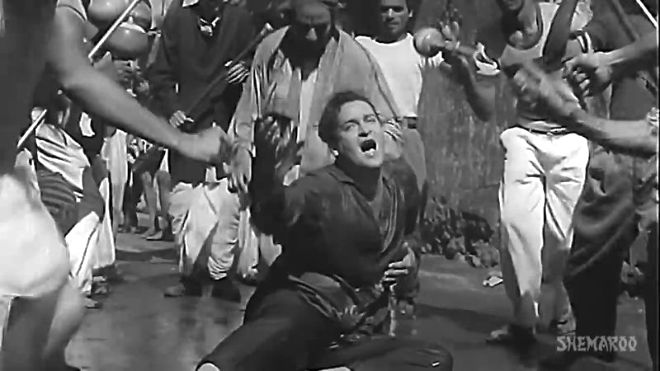“Let’s Celebrate!”: With festival songs

By Madhulika Liddle
Every year, come October, a relative of ours says, “The festival season has begun.” She goes on to list every single celebration coming up over the next several months. Dussehra/Durga Puja, Govardhan Puja, Karva Chauth, Diwali, Bhai Dooj, and a gazillion smaller festivities, some which I didn’t even know about a few years ago. All the way up to Holi. “And then there’ll be a lull all through the summer and the monsoon,” we’re told, every year.
I don’t know if there’s a definitive answer for the question “Which country has the most festivals in the world?” but I could lay a safe bet that India would be pretty much among the top of the pack. Part of the reason probably is our immense diversity: we have people from widely differing regional cultures here, and following different faiths. As a result, there’s a merry mix of religious festivals, seasonal festivals related to harvest/sowing/etc, as well as secular festivals and celebrations. Some are celebrated pretty much across the country; some are so confined to a particular region that they’re rarely even known of outside that locale.
And these festivals, naturally, show up in Hindi cinema. With, almost invariably, a bonus: a song attached to the festival. After all, a festival is cause for celebration, and what better way to celebrate than with a song?
Therefore, here are some ”˜festival songs’ I have selected (note: I’m not calling these ”˜my favourite’; not all of these are especially good).
In Anpadh, Mala Sinha’s character is sister to Balraj Sahni, the indulgent elder brother who has brought her up, and been both father and mother to her. Here, ‘Rang Birangi Raatein Aayi Behna’ in the quintessential rakshabandhan song, she shows her love for her brother, reminding him of their mutual love. All the traditional trappings of the festival are there: the tinseled raakhi tied on his wrist, the tilak on his forehead. The sweets fed to each other, the brother’s gift to his sister. The sister’s promises of eternal love for her veer.
Here’s one especially good one, ‘Arre ja hat natkhat’, which is also rather unusual. Sandhya enacts a duet, dancing as both Krishna and a gopi (Radha?) on Holi. The gopi tells the mischievous Krishna to be gone; she will curse him, she will not be taken in by him. But the irrepressible Krishna says he doesn’t care; today, on Holi, even her curses will be music to his ears. Sandhya isn’t one of my favourites, but I find her quite mesmerizing in this dance, which is so well choreographed. That tree trunk in the middle acts as a good prop to separate Krishna from the gopi, and later, her costume changes to a form in which, seen from one side, she’s a woman, and seen from the other, a man. The clouds of colour, the pichkaari, the gulaal drifting through the air: Holi, yes, and brilliantly depicted.
https://www.youtube.com/watch?v=Z60TE_JDsJE

One of my favourite festival songs, Govinda aala re aala celebrates Krishna Janmashtami, the birthday of Krishna, in a style that does justice to Krishna’s image as a god who likes fun. Shammi Kapoor is in his element as he leads his band of joyous, exuberant Krishna-worshippers through the streets of Bombay to participate in the ceremonial breaking of a dahi handi. Besides the fact that Shammi Kapoor gets totally into the spirit of things, the picturization of the song is worth remarking upon, because this is so obviously the real thing, with hundreds of spectators included in the shots.
Haqeeqat’s Aayi ab ke saal Diwali, my favourite Diwali song is the lovely Aayi Diwali aayi kaise ujaale laayi. The song, music as well as lyrics and rendition, is wonderful, but it’s made even better by the way the picturization evokes Diwali. Fireworks, sparklers (phuljhadis), diyas, fairy lights”¦ it’s all there, and in abundance. Plus that brief bit where the women, fairy lights outlining them and their sticks, dance while it’s dark all round: a little cheesy, perhaps, but interesting.
Another gem is the ‘Mohe panghat pe nandlal’ in Mughal-e-Azam movie celebrating Sri Krishna Janamashtami in the Mughal King Akbar’s palace. Madhubala as ‘Anarkali’ looks gorgeous, the movie, a most expensive one of its times, Rani Jodhabai watches her dance in this beautiful colour song. Mughal-e-Azam was a black and white movie yet had shot songs in colour. The song is quintessentially beautiful to watch also the rest of the songs in the movie were equally good such as ‘Khuda nigeban ho tumhara’ and ‘Pyar kiya tau darna kya’.
Baisakhi is another festival we celebrate with great gusto. There’s is the feeling of great wealth having reaped rich harvest that the farmer is proud of all the hard work he has put in his fields. The song ‘Peepa’ by Daljit Dosanjh makes you get up and dance with him!
Here ‘Mujhe mil gaya Bahana teri deed ka, kaisi khushi leke aaya chand eid ka’ picturised on beautiful Shyama in ‘Barsat Ki Raat’ was a delight to watch. Eid is celebrated in Sydney with great fanfare, people visit Lakemba to taste an array of delicious dishes as people soak in the atmosphere full of love and friendship. What’s really special is the kindness of people in Sydney during the Ramadan month, it is amazing to witness the commitment of the people to their faith. Its so nice to see everyone celebrating it together, walking and exploring various eclectic foods tastefully displayed with stall holders inviting you with a smile. The food is fresh and some dishes are being prepared right in front of you.
Madhulika Liddle runs the website Dusted Off: https://madhulikaliddle.com
Short URL: https://indiandownunder.com.au/?p=17031
